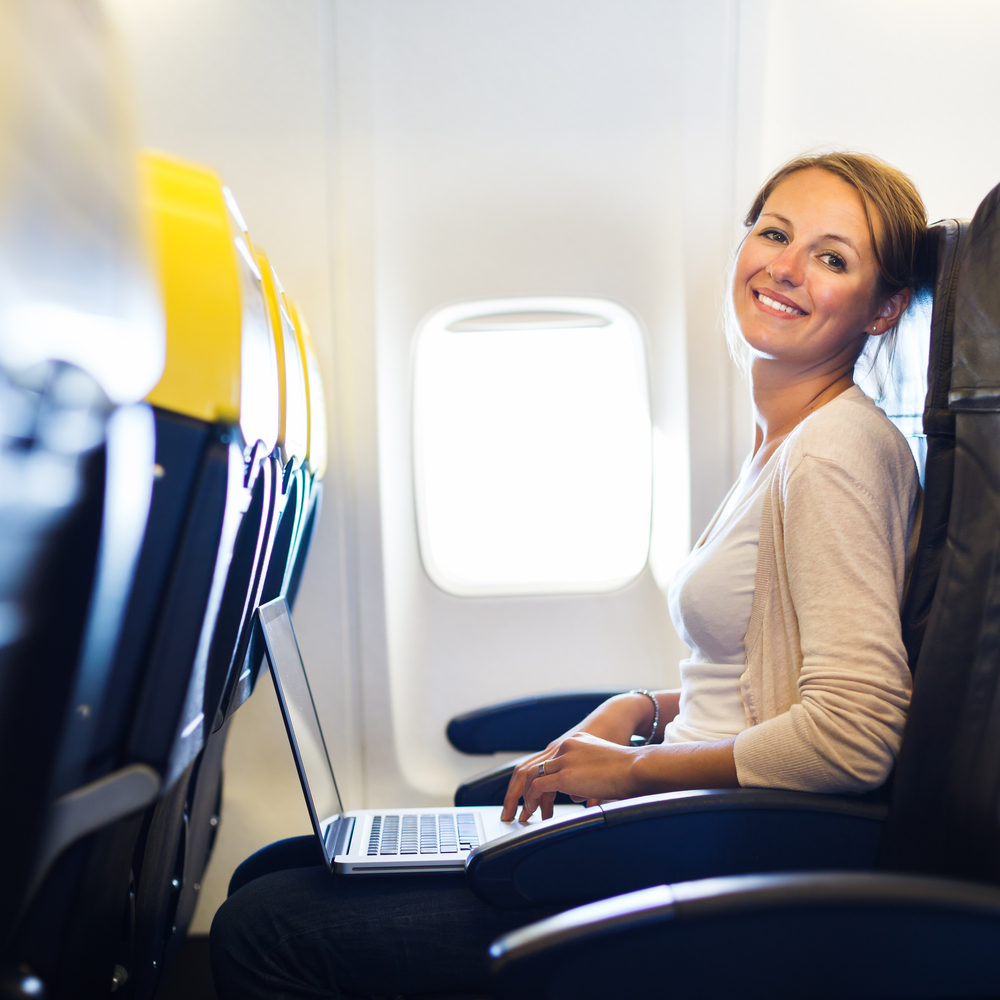In the modern world, many of us become uneasy when our laptops or smartphones cannot connect to the internet. Worried about emails missed or Facebook time lost, losing connectivity to the World Wide Web is many peoples’ worst nightmare. Unfortunately, if you are a frequent air traveler, losing access to the internet is probably a scenario that you face on an all-too-regular basis. While many airlines are now offering WiFi aboard their aircraft, that internet is often both slow and costly—which isn’t a pull for consumers used to cheap and lightening-quick broadband.
So why is that many airline companies still do not offer WiFi onboard their airplanes and why is it that those who do offer such a poor service? In an even more pressing question, is it even possible for internet access to improve for netizens in the sky?

The troubled past of onboard internet
It was not long after the web began to catch on in the mainstream that airline companies began to think through how they could get their travelers online. To this end, Boeing set up Connexion by Boeing (CBB) in an attempt to provide in-flight internet via satellite to their customers. In June 2001 they set up a partnership agreement with other airlines so that they could work on the technology together, but their inventiveness was forestalled by the 9/11 attacks just a few months later. With the airspace industry taking massive losses, most of the partners backed out of the scheme leaving Boeing to shoulder the innovation and cost. While they did turn out a working internet system, it was not cost-effective and CBB was shut down in 2006.
Balancing cost and speed
CBB may have been a non-starter, but that does not mean that other companies were not interested in getting WiFi up in the sky. While at first the reserve of premium airlines like Virgin, WiFi began to catch on in the mainstream as a way to appeal to business customers and frequent flyers who needed a web connection. This was helped along by the retirement of an analogue section of the US spectrum in the mid-2000s, meaning that this section of the spectrum could now be used for air-to-ground internet access. By the late 2000s, most major American airlines offered WiFi on a portion of their flights. However, while quantity was becoming available, quality remained a problem. Many airplane internet users were surprised and annoyed in equal measure the WiFi access abroad many flights was so slow and that it could take minutes such to load a page or send an email.
Cost is another factor that has kept the airline industry from making the most of internet access. Because of the costs involved in installing the equipment needed for in-cabin internet, most airlines charge extra for WiFi use and usually at an extraordinary mark-up. This is useful in two ways: obviously it makes them a lot of money and in addition it stops too many people from using the service. It may sound strange, but airlines do not want everybody to use WiFi as that would make the available internet even slower. The airline industry is also undergoing a change in model, and many low-cost airlines (especially those prevalent in Europe) are resistant to upgrading their planes to provide extras that they do not believe their budget travelers will use.
The long-haul question: overcoming above-sea difficulties
Another reason why in-air WiFi is more common in the US is that the most common type of technology for providing internet specials to airplanes is ground-to-air. While this is not a problem for flights within the continental US, any long-haul flights over water need a different and more expensive satellite-based system to be able to connect to the internet. It is with satellite communications however that the future of in-flight internet lies. Southwest airlines recent switched to satellite-based Row 44, snubbing the most common ground-to-air GoGo service. Many also believe that the launching of new satellites which will enable high speed internet access like the Global Xpress service will lead more airlines towards satellite service and allow in-flight internet to reach its full potential.



























